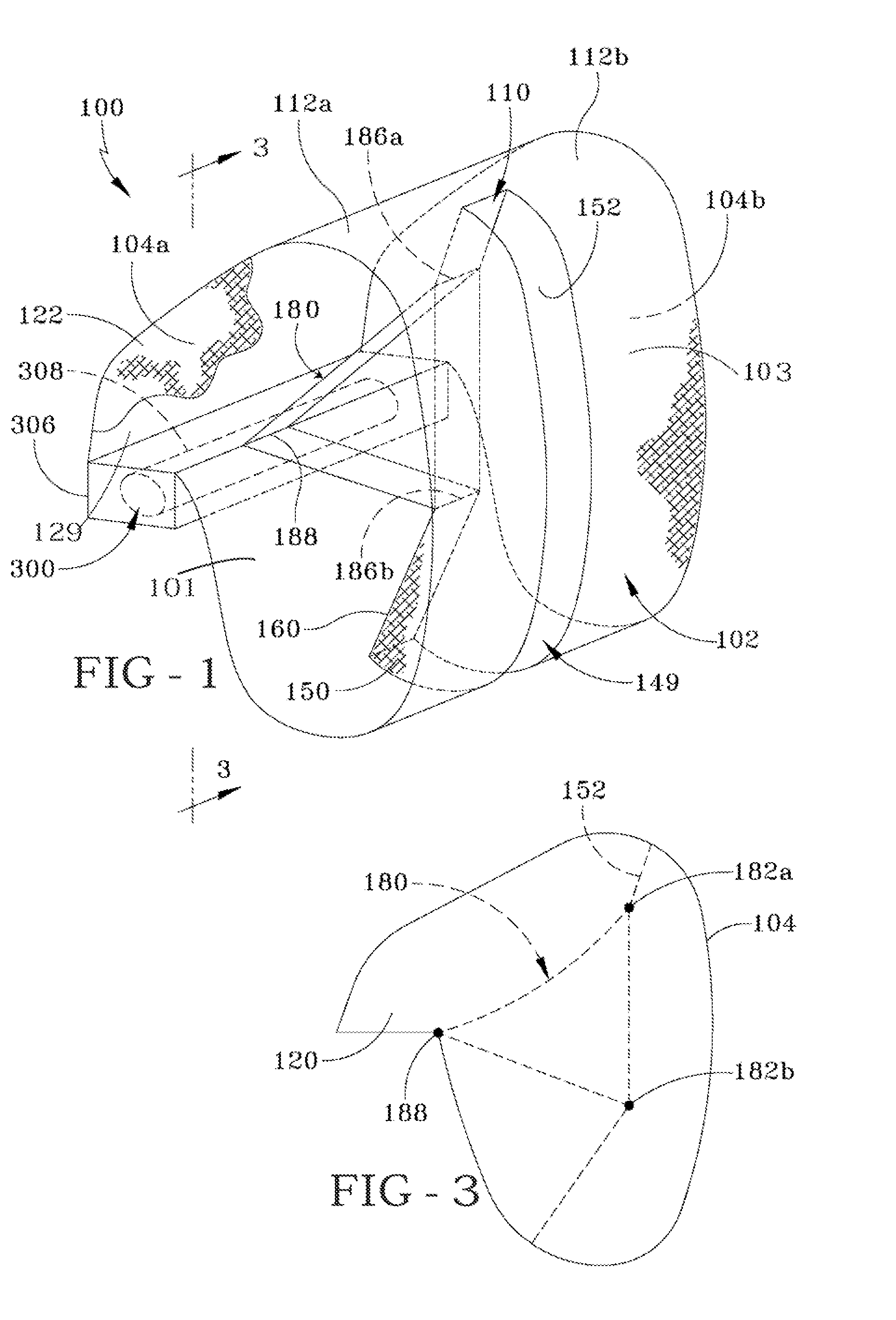Air bag with groove or recess, open or partially covered
a technology of air bags and grooves, applied in the direction of pedestrian/occupant safety arrangements, vehicular safety arrangements, vehicle components, etc., can solve the problems of high degree of reliability, high cost and complexity of sensors, and no system commonly used can accommodate deployment, etc., to achieve high reliability and avoid significant cost penalties
- Summary
- Abstract
- Description
- Claims
- Application Information
AI Technical Summary
Benefits of technology
Problems solved by technology
Method used
Image
Examples
Embodiment Construction
[0038] The air bag shown in various figures has a single chamber 101 and in general can be formed by one or more panels of fabric. The air bag can be woven or knitted as a one-piece construction or formed by sewing or bonding a plurality of panels together. A groove 110 is formed behind the panel or portion of the air bag facing the occupant to be protected. In the illustrated embodiment, air bag 100 includes a main panel 102 having a face panel portion 103, which faces the vehicle occupant to be protected, and a plurality of side panels 104a, 104b. As can be appreciated the size of the air bag and its various panels will change in each vehicular application. Further, as can be appreciated it is not necessary to form the air bag with separate side panels and a linking main (or center) panel. Each of these panels is typically made from woven fabric comprising nylon or polyester. The side panels 104a, 104b are substantially identical and are the mirror image of each other. Each of the...
PUM
 Login to View More
Login to View More Abstract
Description
Claims
Application Information
 Login to View More
Login to View More - Generate Ideas
- Intellectual Property
- Life Sciences
- Materials
- Tech Scout
- Unparalleled Data Quality
- Higher Quality Content
- 60% Fewer Hallucinations
Browse by: Latest US Patents, China's latest patents, Technical Efficacy Thesaurus, Application Domain, Technology Topic, Popular Technical Reports.
© 2025 PatSnap. All rights reserved.Legal|Privacy policy|Modern Slavery Act Transparency Statement|Sitemap|About US| Contact US: help@patsnap.com



